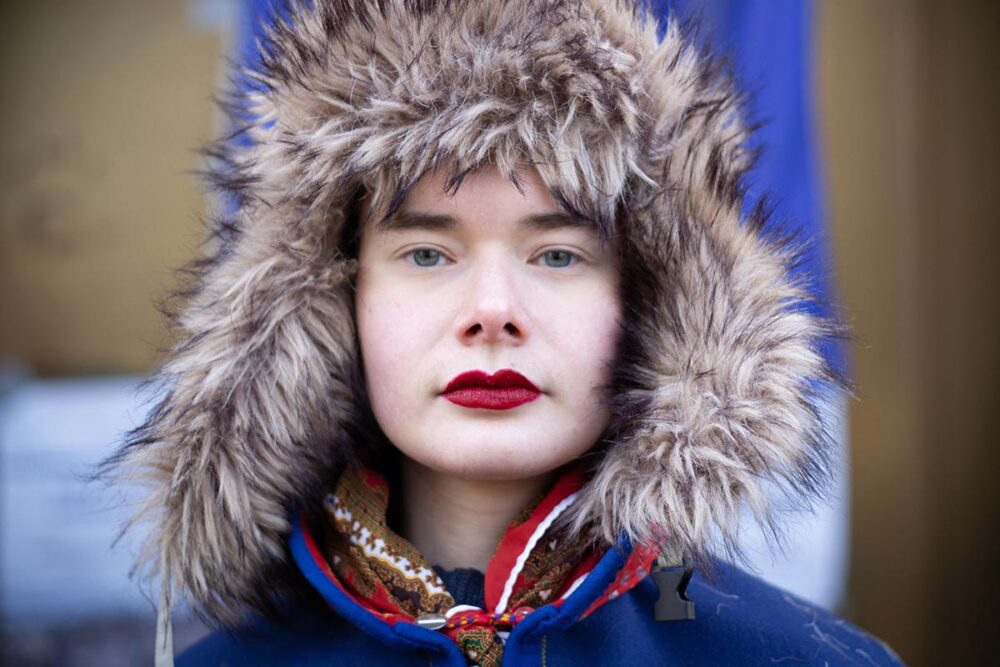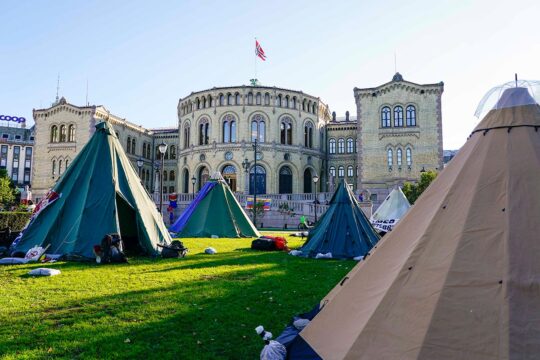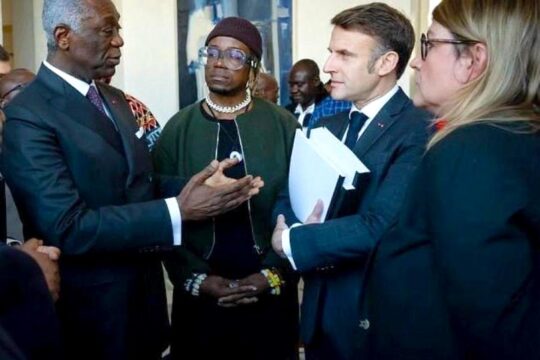At midday on June 1, Norwegian Truth and Reconciliation Commission (TRC) chairman Dagfinn Høybråten handed over the final report to Norwegian parliament president Masud Gharahkhani at an official ceremony in Stortinget, Oslo. An hour later, only a few 100 metres away, leader of Kvääniteatteri (the Kven Theatre) Frank Jørstad took stage at the National Theatre to give the first reading aloud of the full TRC report, nearly 700-pages long. This reading took more than 35 hours and could be followed live on the national broadcaster NRK and listening posts around the country.
But other than these two events, the Norwegian TRC has rarely made national headlines in the nearly five years it has been working. It is uncertain how much the Norwegian population actually know of the Truth and Reconciliation process. This situation only underscores one of the general problems pointed out in the TRC report, namely the lack of knowledge of the history and present-day conditions of the Sámi, Kven, Norwegian Finns and Forrest Finns.
However, contrary to the truth-seeking processes in Sweden and Finland commissioned by their governments, who may choose to ignore the commissions’ findings, the Norwegian TRC had the status of a granskingskommission – that is, an inquiry commissioned by Parliament and which Parliament is bound to follow up. In this sense, June 1 only marked the transition to a new phase in the reconciliation process.
Discussing Norwegianization
The three-fold mandate asked for an investigation into Norwegian assimilation policies directed towards the Sámi, Kven and Norwegian Finns (the commission itself added the Forrest Finns to the list shortly after commencing); an investigation on the after-effects of the policies; and recommendations on how to reconcile.
The mandate was limited to addressing direct “Norwegianization” – that is, assimilation policies which took place from the 1860s to 1963. But the report includes an in-depth background section that studies the minorities in a historical perspective, going back to the earliest written records on the relationships between the Finno-Ugric and Germanic-speaking populations in what today is Norway. There has been some debate in recent years as to whether the concept of colonialism can be applied to describe early modern relations between Norwegians and the Sámi. The report chooses to discuss the concept in an academically cautious manner. The medieval activities of the Norwegian Crown and the Catholic Church in the Sámi areas are presented as a gradual takeover of the Sámi homeland. Intensified early modern expansion of the state and Lutheran Church is discussed in terms of state and nation building, and not colonialism. The period leading up to the active assimilation policies is described as a struggle between a Lutheran and pragmatic principle of mission and education emphasizing the importance of the minorities’ mother tongue, and a forceful nationalist ideology that understands Norwegian as the only language of the state – a struggle which is largely won by the nationalist side.
Norway is a young nation, gaining independence in 1905. Norwegian nationalism has therefore often been understood as a more “innocent” nationalism, celebrating the nation’s right to independence. This value was understood as so important that it led to the exclusion of minorities.
Ongoing indirect assimilation
Staying true to the mandate, the report takes a closer look at the after-effects of the official Norwegianization policies, building on interviews with more than 700 people who have shared their own or family stories and experiences. The stories quoted throughout the report give insight into the grievances caused by direct assimilation policies and conflicts between groups in Norwegian society, but also frustrations when dealing with the authorities’ negligence and the feeling of having to constantly fight for the right of belonging to another ethnic group.
The report documents that indirect Norwegianization has indeed taken place after the official repeal of Norwegianization policies in 1963. This was often part of the development of Norway’s welfare state after World War Two, based on an ideology of equality for all. However, the report also points out that the minorities were sometimes treated differently from the majority within the scheme of post-war welfare state policies.
The report identifies ongoing indirect assimilation processes within the spheres of language, health and socio-politics, culture, and not least the continued threat posed to traditional livelihoods and business, including especially Sámi reindeer herding, Kven and Sea-Sámi small scale fisheries and salmon fisheries in the Tana river valley.
Failure to implement minority rights
The TRC understands truth to mean that all parts of society share a solid common knowledge of the past and trust as essential to reconciliation in a Norwegian context. A major finding of the report is the large knowledge gap, meaning the majority population mostly have no knowledge, or only limited knowledge about the Indigenous and national minorities’ language, culture, and history. On a day-to-day level, the knowledge gap is a direct factor in failure to implement secured rights. Employees in the municipalities simply do not know that these rights exist – or if they do, do not always understand why it is important to follow them.
Indeed, perhaps the report’s most important finding is the large gap between Sámi and other minorities’ rights long secured in international laws and conventions adopted by Norway, as well as national laws and regulations, and failure to implement them. Recent examples include the so-called Fosen case and the ongoing struggles that many Kven and Sámi parents need to wage to get the language education for their children that is a right under Norwegian law.
The implementation gap results in a crisis of trust between minorities and the state. Securing adequate knowledge of rights and background among officers in relevant ministries, municipalities, schools and so on is key to fostering reconciliation, according to the TRC.
Finally, the report shows a need for adjustment of the majority population’s self-image. Norway has often been described as a conformist society, with little or no space to be different. While the official Norwegianization policy has ended, the effects of it continue through strict norms for interaction, where minority language and culture is often understood as something that belongs in the private sphere. Showing one’s difference from the majority might thus be interpreted as a provocation and even activism.
The report is out, what now?
The idea to form a truth and reconciliation commission had simmered in Sámi political circles since the turn of the Millenium and took form when proposed by a member of the Norwegian Sámi Parliament, Laila Susanna Vars, in 2014. It was backed by the Sámi Parliament and most Kven, Forrest Finnish and Norwegian Finnish organisations. Indigenous people and minorities also expected things to change. Research from other TRCs around the world suggest that not following up on TRC reports risks aggravating already tense relations within a society, so it is imperative that Norway does follow up on the recommendations.
However, some battles are easier fought than others. Securing access to language education can be tricky in terms of recruiting competent teachers, online tools and awareness that both municipalities and schools are legally bound to prioritize these fields -- although this might become more feasible in coming years. Securing rights to live by traditional small-scale fishery in face of business interests in large-scale Norwegian fishing industries will undoubtedly be a tough political battle, while national interests in wind and waterpower often conflict with the right of Sámi reindeer herders to continue their traditional livelihoods.
Apart from the public handing over and reading of the commission report, the Norwegian TRC has not organized any larger national reconciliation events like those organized by, for example, the Canadian TRC. Norway’s TRC has organized smaller open hearings, and individual processes of reconciliation may have taken place while it was working, but the TRC never aimed at larger “transformative” national events.
It is the long haul that the TRC had in mind when crafting its recommendations. It is also only in the longer run – in three, ten and 25 years - that the reconciliation process can be evaluated. So far, as part of the obligation to implement the report’s recommendations, the Norwegian Parliament has asked its Kontroll – og konstitusjonskomiteen (Control and Constitutional Committee) to take a closer look at how minorities’ rights are being administered by the state and municipalities. This work has only just begun.
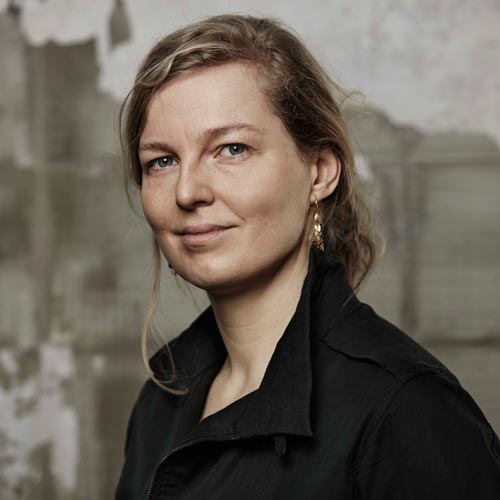
Astrid Nonbo Andersen is a Senior Researcher at the Danish Institute for International Studies. Her principle area of research focuses on the politics of memory and history with a special focus on Truth and Reconciliation commissions, official apologies, claims for reparation and restitution. Her research primarily focuses on colonialism in the Nordic countries, Denmark and its former colonies - especially the US Virgin Islands, Greenland and Tharangampadi. Her article “The Greenland Reconciliation Process: Moving Beyond a Legal Framework”, is published in the coming Yearbook of Polar Law, Volume 11, 2019 (April 2020). Her book, “Ingen Undskyldning: Erindringer om Dansk Vestindien og kravet om erstatninger for slaveriet,” was published in March 2017 (Gyldendal). See also Andersen’s two-day conference here.
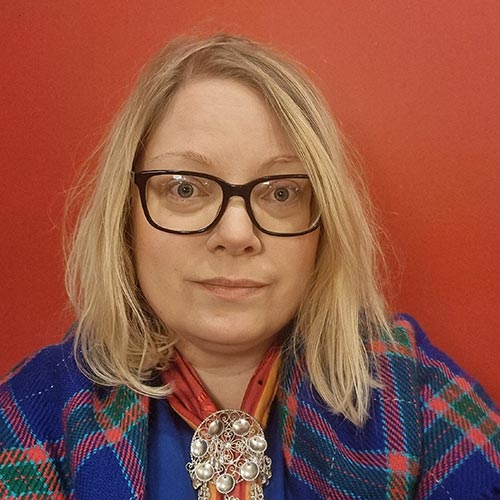
Astri Dankertsen is Professor in Sociology and head of Division for Research on Environment, International Relations, the Arctic and Security at Faculty for Social Sciences at Nord University. Her research has been mostly concerned with Sámi and Indigenous issues, youth, gender and communities in the Arctic.

Otso Kortekangas is a postdoctoral researcher at Åbo Akademi University, Turku, Finland. He is involved in the project TRiNC: Truth & Reconciliation in the Nordic Countries led by Astrid Nonbo Andersen at the Danish Institute for International Studies (DIIS). His academic interests include educational history, environmental history, and Arctic and Sámi history.


